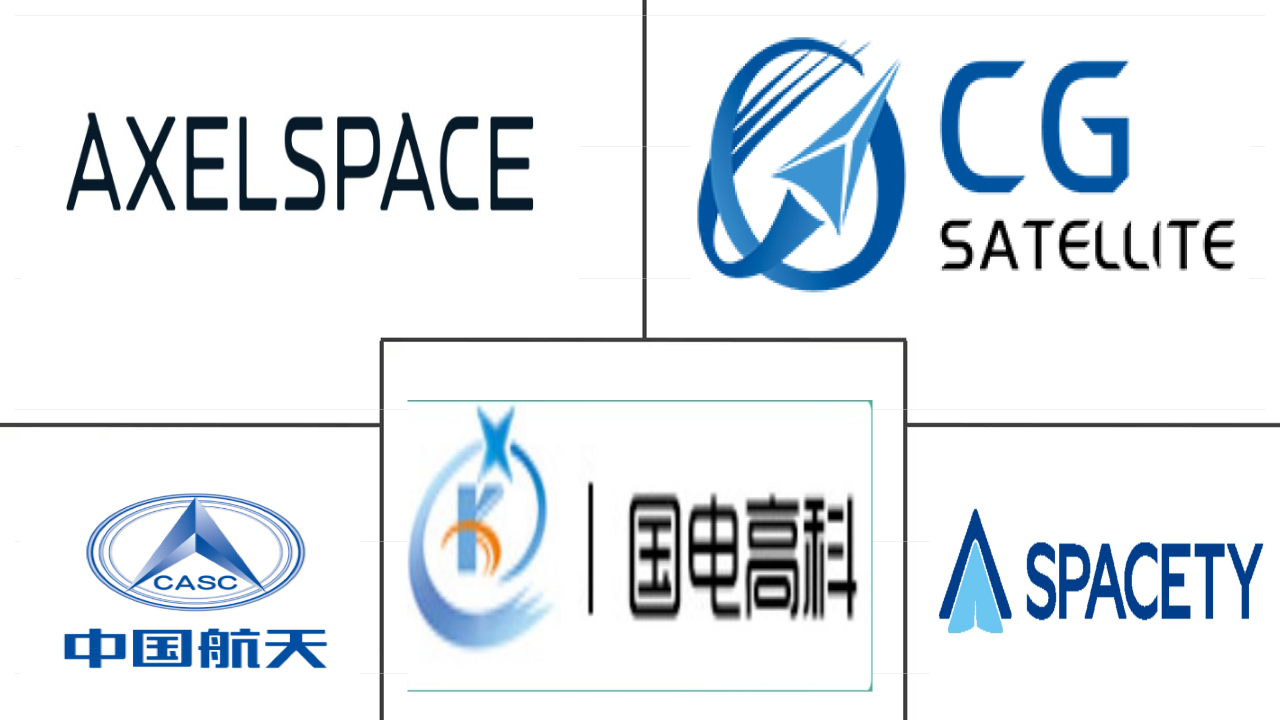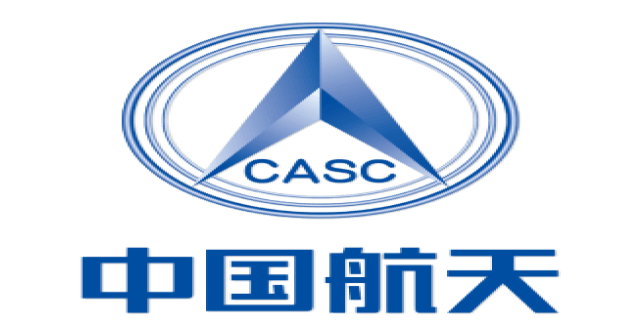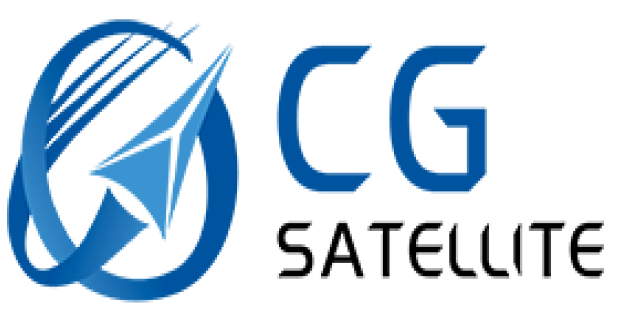Market Size of asia-pacific small satellite Industry

|
|
Study Period | 2017 - 2029 |
|
|
Market Size (2024) | USD 15.07 Billion |
|
|
Market Size (2029) | USD 31.25 Billion |
|
|
Largest Share by Orbit Class | LEO |
|
|
CAGR (2024 - 2029) | 15.70 % |
|
|
Largest Share by Country | South Korea |
Major Players |
||

|
||
|
*Disclaimer: Major Players sorted in no particular order |
Asia-Pacific Small Satellite Market Analysis
The Asia-Pacific Small Satellite Market size is estimated at USD 15.07 billion in 2024, and is expected to reach USD 31.25 billion by 2029, growing at a CAGR of 15.70% during the forecast period (2024-2029).
15.07 Billion
Market Size in 2024 (USD)
31.25 Billion
Market Size in 2029 (USD)
74.83 %
CAGR (2017-2023)
15.70 %
CAGR (2024-2029)
Largest Market by End User
97.12 %
value share, Commercial, 2022
The commercial segment is expected to occupy a significant share because of the increasing use of satellites for various telecommunication services.
Largest Market by Application
95.62 %
value share, Communication, 2022
Governments, space agencies, defense agencies, private defense contractors, and private space industry players are emphasizing the enhancement of the communication network capabilities for various public and military reconnaissance applications.
Largest Market by Orbit Class
99.74 %
value share, LEO, 2022
LEO satellites are increasingly being adopted in modern communication technologies as they play an important role in Earth observation applications.
Leading Market Player
25.61 %
market share, China Aerospace Science and Technology Corporation (CASC), 2022

China Aerospace Science and Technology Corporation (CASC) is the largest player in the market. It offers a diverse range of launch vehicles and adopts a competitive pricing strategy to attract customers globally.
Second Leading Market Player
11.64 %
market share, Chang Guang Satellite Technology Co. Ltd, 2022

Chang Guang Satellite Technology Co. Ltd is the second-largest player in the market. CGSTL is the first commercial remote-sensing satellite company in China.
Satellites that are being launched into LEO is driving the market demand
- In recent years, demand for small satellites in the region has been rising rapidly, with more and more businesses and governments seeking to leverage the benefits of the cost-effective and versatile spacecraft.
- LEO satellites are one of the most popular types of small satellites launched in the Asia-Pacific region. They are used for various applications, including remote sensing, Earth observation, and communication. In the region, during 2017-2022, around 240 satellites were launched into LEO, of which 128 satellites were launched for Earth observation, followed by 67 satellites for technology development, 24 for communication, and 12 for space science.
- The MEO satellite is another small satellite gaining popularity in the Asia-Pacific region. These satellites are used for global navigation, communication, and remote sensing applications. MEO satellites offer several advantages over LEO satellites, including broader coverage and the ability to provide high-bandwidth communication services.
- The other type of satellites being launched into space in the Asia-Pacific region are GEO satellites. These satellites are used for communication and weather monitoring applications. One of the main advantages of GEO satellites is their ability to remain in a fixed position relative to the Earth, making them ideal for applications requiring continuous coverage, including television broadcasting and internet connectivity. During 2017-2022, one satellite was launched into GEO for surveillance. These advancements are projected to increase this segment's growth rate by 182% during 2023-2029.
Asia-Pacific Small Satellite Industry Segmentation Asia-Pacific Small Satellite Industry Segmentation
Communication, Earth Observation, Navigation, Space Observation, Others are covered as segments by Application. GEO, LEO, MEO are covered as segments by Orbit Class. Commercial, Military & Government are covered as segments by End User. Electric, Gas based, Liquid Fuel are covered as segments by Propulsion Tech.
- In recent years, demand for small satellites in the region has been rising rapidly, with more and more businesses and governments seeking to leverage the benefits of the cost-effective and versatile spacecraft.
- LEO satellites are one of the most popular types of small satellites launched in the Asia-Pacific region. They are used for various applications, including remote sensing, Earth observation, and communication. In the region, during 2017-2022, around 240 satellites were launched into LEO, of which 128 satellites were launched for Earth observation, followed by 67 satellites for technology development, 24 for communication, and 12 for space science.
- The MEO satellite is another small satellite gaining popularity in the Asia-Pacific region. These satellites are used for global navigation, communication, and remote sensing applications. MEO satellites offer several advantages over LEO satellites, including broader coverage and the ability to provide high-bandwidth communication services.
- The other type of satellites being launched into space in the Asia-Pacific region are GEO satellites. These satellites are used for communication and weather monitoring applications. One of the main advantages of GEO satellites is their ability to remain in a fixed position relative to the Earth, making them ideal for applications requiring continuous coverage, including television broadcasting and internet connectivity. During 2017-2022, one satellite was launched into GEO for surveillance. These advancements are projected to increase this segment's growth rate by 182% during 2023-2029.
| Application | |
| Communication | |
| Earth Observation | |
| Navigation | |
| Space Observation | |
| Others |
| Orbit Class | |
| GEO | |
| LEO | |
| MEO |
| End User | |
| Commercial | |
| Military & Government | |
| Other |
| Propulsion Tech | |
| Electric | |
| Gas based | |
| Liquid Fuel |
Asia-Pacific Small Satellite Market Size Summary
The Asia-Pacific small satellite market is experiencing significant growth, driven by increasing demand from both commercial and governmental sectors. This surge is attributed to the cost-effectiveness and versatility of small satellites, which are becoming increasingly popular for various applications such as remote sensing, Earth observation, and communication. The region has seen a notable rise in the launch of low Earth orbit (LEO) satellites, with medium Earth orbit (MEO) and geostationary orbit (GEO) satellites also gaining traction due to their broader coverage and high-bandwidth communication capabilities. The miniaturization of electronics and the development of smart materials have facilitated the production of nano and microsatellites, making satellite technology more accessible and affordable for a wider range of organizations.
Countries like China, India, Japan, and South Korea are leading the charge in the Asia-Pacific small satellite market, boasting complete end-to-end space infrastructure and technology. These nations are enhancing their satellite production capabilities to capitalize on the burgeoning market opportunities. The region's market is moderately consolidated, with major players such as Axelspace Corporation, Chang Guang Satellite Technology Co. Ltd, and China Aerospace Science and Technology Corporation (CASC) dominating the landscape. As space-related activities continue to expand, the number of operating satellites in the region is expected to increase significantly, supported by robust investments and strategic initiatives in space exploration and satellite manufacturing.
Asia-Pacific Small Satellite Market Size - Table of Contents
-
1. MARKET SEGMENTATION (includes market size in Value in USD, Forecasts up to 2029 and analysis of growth prospects)
-
1.1 Application
-
1.1.1 Communication
-
1.1.2 Earth Observation
-
1.1.3 Navigation
-
1.1.4 Space Observation
-
1.1.5 Others
-
-
1.2 Orbit Class
-
1.2.1 GEO
-
1.2.2 LEO
-
1.2.3 MEO
-
-
1.3 End User
-
1.3.1 Commercial
-
1.3.2 Military & Government
-
1.3.3 Other
-
-
1.4 Propulsion Tech
-
1.4.1 Electric
-
1.4.2 Gas based
-
1.4.3 Liquid Fuel
-
-
Asia-Pacific Small Satellite Market Size FAQs
How big is the Asia-Pacific Small Satellite Market?
The Asia-Pacific Small Satellite Market size is expected to reach USD 15.07 billion in 2024 and grow at a CAGR of 15.70% to reach USD 31.25 billion by 2029.
What is the current Asia-Pacific Small Satellite Market size?
In 2024, the Asia-Pacific Small Satellite Market size is expected to reach USD 15.07 billion.

